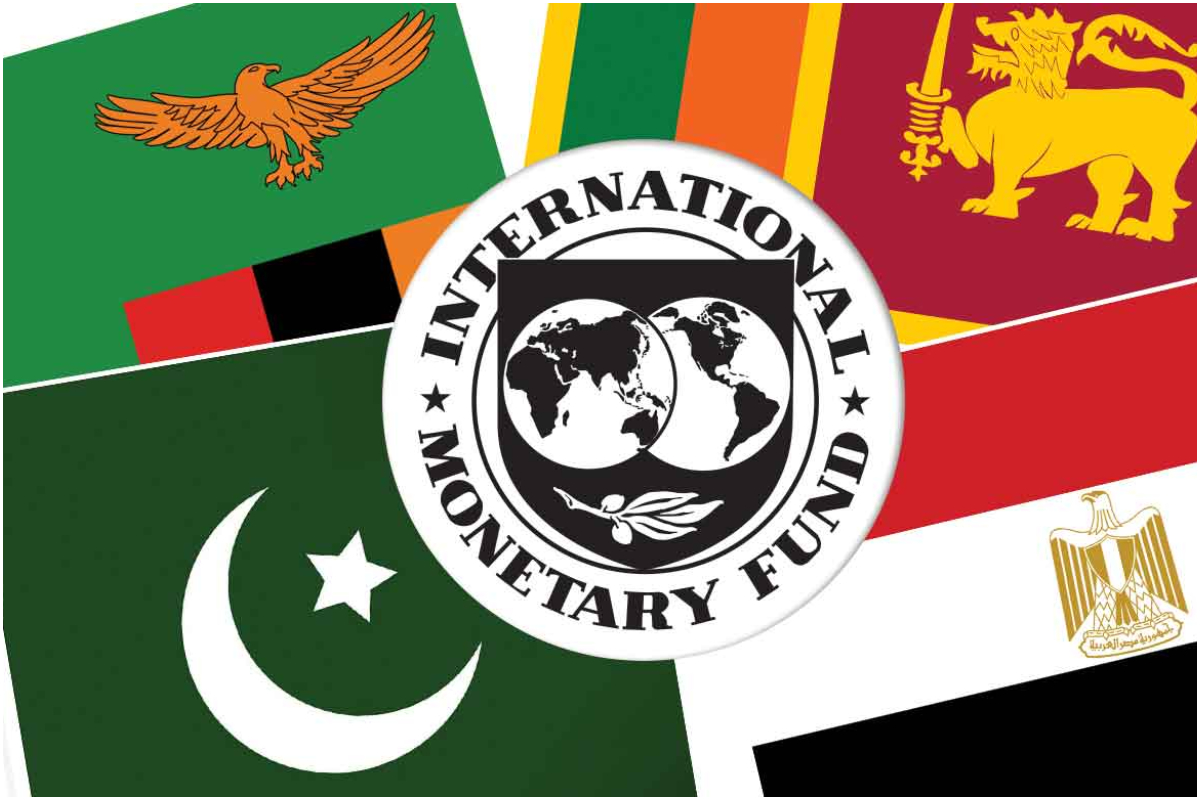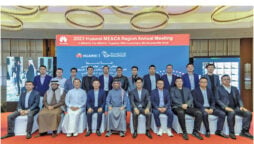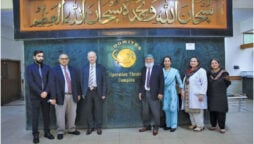
Negotiating table for debtors and China
The nature and severity of the recent economic crises in Pakistan and Sri Lanka are almost identical and these occurred in similar timeframes and under similar circumstances. As a result, Sri Lanka was declared bankrupt in April of the current year and within a few months, the rulers of Sri Lanka, especially former president Gotabaya Rajapaksa, had to flee the country, while before Pakistan was about to be declared bankrupt the change of government took place here.
The new rulers of the country claim that they came into power by risking their popularity to save the country from bankruptcy. We reserve our view on the situation in Pakistan for another time. However, to understand the similarities between Pakistan and Sri Lanka is that Pakistan reduced the prices of petrol and diesel by Rs10, while Sri Lanka reduced the price of bread by Rs10. This reduction reveals the priorities of the governments of both countries.
The second important news was regarding International Monetary Fund (IMF) Managing Director Kristalina Georgieva’s statement in which she said that China has agreed to organise a roundtable dialogue with all kinds of partners (stakeholders) on global debt. She said that China is a bit more optimistic about this programme hosted by the IMF. The IMF is optimistic about the debt burden of low- and middle-income countries; following meetings with the Chinese officials last week.
The IMF chief said she held “intentional discussions” with the Chinese officials to speed up the debt relief measures for the countries such as Zambia and Sri Lanka.
The IMF has placed high hopes on China for heavily-indebted countries. Earlier, the West had left Indian ‘Nauratan’ to challenge China in the background of Sri Lanka’s economic and financial problems.
Sri Lanka announced bankruptcy on April 12, 2022, soon after the government in Pakistan was removed through a no-confidence motion on April 9, 2022.
In its initial announcement, Sri Lanka said it was suspending all its foreign loans and disbursements except for multilateral bank loans. At the same time, Sri Lanka requested a bailout package from the IMF and asked the international financial institution to restructure its debts of $30 billion. This was the occasion when the Westerners were blaming China for Sri Lanka’s economic and financial crisis.
The Indian financial braggarts, echoing Western Hippocrates, also began to say that China had trapped Sri Lanka in its debt trap.
Indian economic analyst Brahma Chellaney, a New Delhi-based financial guru, called the situation debt-trapping diplomacy. Chellaney accused China of creating projects that make it difficult for the borrower countries to repay their loans. Then these countries are forced to hand over their strategic assets to China. In proof of his claim, he presented Sri Lanka’s announcement of handing over 80 per cent control of its port, Hambantota, to China Merchant Holdings.
The so-called Indian economist borrowed his economic wisdom from the years-old American narrative of Sri Lanka’s bankruptcy. America started spreading this anti-China narrative years ago. The US State Department developed an analytical exercise for the students at Harvard University called “Hambantota: Chinese Debt-trap Diplomacy”. America started spreading it by naming predatory economics. While all this work was being done under the American defence strategy.
Now, the question arises as to why the need for a Chinese remedy arose after attributing a longstanding issue to the Chinese victimisation and linking it to the bankruptcy of Sri Lanka and the IMF resorting to Chinese sages to treat its debtor countries.
It is ironic that after the IMF’s good intentions with China, US Treasury Secretary Janet Yellen and other Western scholars are complaining about why the interests are sinking into the Chinese economic quagmire.
Why is the world’s largest sovereign lender lending under the G20 framework? They ask. While China is of the view that the private lenders and multilateral development banks should restructure the debt to make the whole issue transparent.
Georgieva said that there has been good progress in the negotiations with China and we have agreed to set up a high-level global sovereign creditor negotiation structure that includes key creditors, private sector and some creditor countries. In addition, the World Bank, IMF and the G20 presidency will have the status of co-conveners.
The reality of Sri Lanka’s debt will also help us understand some of our problems. At the beginning of this millennium, China’s loans to Sri Lanka were very small, less than one per cent of Sri Lanka’s total external debt. During the Sri Lankan civil war, the Chinese loans started rising and these were acquired in accordance with the vision of the then president Mahinda Rajapaksa. He wanted development in Sri Lanka based on building infrastructure. One of his projects was to develop a port in his home province of Hambantota and China agreed to provide a loan and several installments for the project. Mahinda Rajapaksa wanted to make this port the hub of trade.
The global recession of 2007/08 facilitated access to debt markets in the developed world, while Sri Lanka borrowed heavily but during this period, Sri Lankan exports froze and the Hambantota Port went into losses.
At the same time, there were weaknesses in the repayment of loans. Then a major event happened when Mahinda Rajapaksa lost the elections in 2015 and was replaced by Ranil Wickremesinghe who, in the tradition of the Third World War, disabled the projects of his predecessor Rajapaksa, especially the Hambantota Port.
Almost the same thing happened in Pakistan when the work on the China-Pakistan Economic Corridor (CPEC) was stopped at the request of the world power. In such circumstances, when the debt and payment crisis became serious, Sri Lanka, like us, took up the courage to knock on the door of the IMF, where the hunting net is always ready.
In 2015, the government of Ranil Wickremesinghe, instead of adopting a reforms policy of access to loans, began knocking on the doors of the international lenders for more loans. The World Bank estimates that Sri Lanka’s outstanding debt has reached $63 billion, with the Chinese debt accounting for 12 per cent of the total debt. This situation shows that the Chinese debt trap propaganda was actually meant to divert attention from the real problem.
The real problem was that Sri Lanka obtained loans from the international market at higher interest rates, exactly the same loans that were obtained by former Imran Khan’s government at high interest rates, which are now life threatening to our country’s economy.
In our case, Imran Khan avoided going to the IMF and obtained loans from the global market. When he approached the IMF for the second time, things had completely changed. Ironically, Khan deviated from the terms accepted by the IMF, which put the entire country and the national economy into hot waters. The Chinese debt trap propaganda further undermined the debt repayment capacity of Sri Lanka and other developing countries. Most recently, the IMF’s Executive Board approved new 46-month loans worth $3 billion to Egypt under the Extended Fund Facility.
In the developing world, the predator’s trap lies with the governments there, who by all means borrow money from the international financial institutions to obtain huge loans on heavy terms and mortgage the future of nations and their national assets.
With this package from the IMF, Egypt will be able to get another $14 billion in additional financing from the global and regional partners and Mirza Ghalib will explain how poverty is brought about by drinking the wine of debt.
Sri Lanka has declared default on its international debts since June this year and now the international financial institutions are not thinking of cancelling or deferring their loans because the real trap for developing economies is these institutions, which are weak.
Dreamers in countries spread debt traps by monopolising the governments and making it difficult for these countries to breathe without their will.
The IMF head said that we do not have a solution to the problem, as the parties to the issue sit in different rooms and do not talk to each other. Only China can provide such a platform, as it is ready to host negotiations on such international loans to the extent of Sri Lanka and Zambia but are the IMF, World Bank, the Asian Development Bank and other consortia providing loans to the Third World countries cares about the people, who are burdened with debt accumulated by the corrupt governments and greedy lenders?
Catch all the Economic Pulse News, Breaking News Event and Latest News Updates on The BOL News
Download The BOL News App to get the Daily News Update & Live News.








 Read the complete story text.
Read the complete story text. Listen to audio of the story.
Listen to audio of the story.